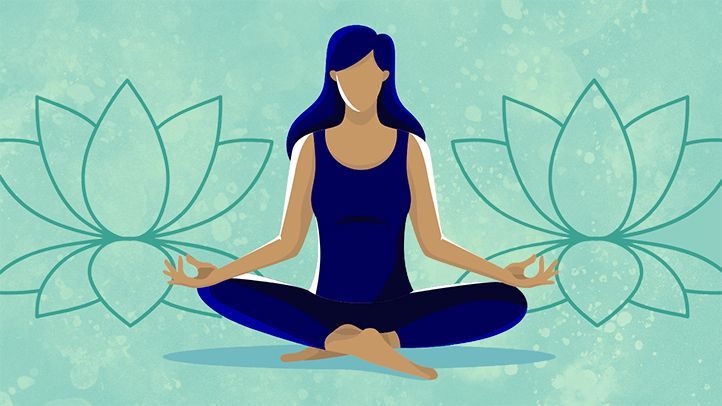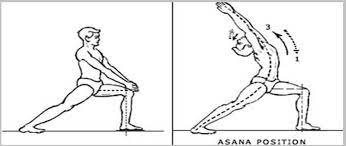Meditation, an ancient practice that has stood the test of time, has become a popular and essential tool for modern living. It offers a profound means of achieving mental clarity, emotional balance, and inner peace. In this ultimate guide to meditation, we will explore the various meditation techniques, their benefits, and how you can incorporate this practice into your daily life to enhance your overall well-being.
Understanding Meditation
Meditation is a practice that encourages mindfulness, focusing your attention on the present moment while allowing thoughts and distractions to come and go without judgment. It’s about achieving a state of mental stillness, calmness, and heightened awareness. There are numerous meditation techniques, but they all share a common objective: to quiet the mind and create a sense of inner peace.
Types of Meditation Techniques
- Mindfulness Meditation:
- Mindfulness meditation is a practice that emphasizes staying present in the moment and observing your thoughts and feelings without judgment. It helps you become more aware of your thoughts and emotions, promoting a greater understanding of yourself.
- Guided Meditation:
- In guided meditation, a teacher or audio recording provides instructions, often with a specific goal or visualization in mind. This type of meditation can be particularly helpful for beginners.
- Transcendental Meditation (TM):
- TM is a mantra-based meditation technique where you silently repeat a specific word or phrase to calm the mind and enter a deep state of relaxation.
- Loving-Kindness Meditation:
- Also known as Metta meditation, this technique focuses on cultivating feelings of compassion and love for oneself and others. It involves repeating positive affirmations and well-wishes.
- Vipassana Meditation:
- Vipassana is an ancient meditation technique that involves observing bodily sensations, thoughts, and emotions to gain insight into the true nature of reality.
- Yoga Nidra:
- Often referred to as yogic sleep, Yoga Nidra is a deep relaxation technique that takes you into a state of conscious sleep, promoting profound relaxation and healing.
Benefits of Meditation
Meditation offers a wealth of benefits for both the mind and body. Here are some of the most compelling advantages:
- Stress Reduction:
Meditation is renowned for its ability to lower stress levels by reducing the production of stress hormones like cortisol. This can lead to a greater sense of calm and relaxation in daily life.
- Improved Emotional Well-Being:
Regular meditation helps individuals become more aware of their emotions and better equipped to manage them. It promotes emotional stability, reducing the impact of mood swings and anxiety.
- Enhanced Concentration and Focus:
Meditation is an effective tool for increasing attention span and improving cognitive function. It teaches the mind to stay present and focused, leading to greater productivity.
- Better Sleep:
Practicing meditation before bedtime can promote better sleep quality and alleviate insomnia. It helps relax the mind and prepares the body for rest.
- Pain Management:
Meditation can be used as a complementary therapy for pain management. It encourages a heightened tolerance for discomfort and can alleviate chronic pain conditions.
- Increased Self-Awareness:
Meditation fosters a deeper understanding of one’s thoughts, emotions, and inner self. This self-awareness can lead to personal growth and self-improvement.
- Enhanced Resilience:
Meditation equips individuals with the tools to handle life’s challenges with greater resilience. It promotes a sense of inner strength and the ability to bounce back from adversity.
Incorporating Meditation into Daily Life
If you’re new to meditation or looking to deepen your practice, here are some practical steps to incorporate meditation into your daily life:
- Start Small:
Begin with short, manageable sessions, such as 5-10 minutes, and gradually increase the duration as you become more comfortable.
- Find a Quiet Space:
Create a serene, distraction-free environment where you can practice meditation. Make it a place that promotes relaxation and focus.
- Consistency Matters:
Set aside specific times each day for your meditation practice. Whether it’s in the morning, during lunch, or before bed, consistency is key to reaping the full benefits.
- Seek Guidance:
Consider taking meditation classes, using guided meditation apps, or accessing online resources. Having a teacher or guide can be invaluable, especially for beginners.
- Experiment:
Explore different meditation techniques to find what resonates with you. The right technique is the one that feels most natural and effective for you.
Beyond Meditation: Mindful Living
Meditation is not limited to sitting in a quiet room with your eyes closed. Mindfulness, the practice of staying fully present in the moment, can be extended to all aspects of your daily life. Here are some ways to incorporate mindfulness into your everyday activities:
- Mindful Eating: Pay full attention to the flavors and textures of your food, savoring each bite.
- Mindful Walking: When you walk, focus on each step, your breathing, and the sensations in your body.
- Mindful Breathing: Take moments throughout the day to consciously breathe deeply and relax your body.
- Mindful Communication: Practice active listening and mindful speaking to enhance your relationships.



